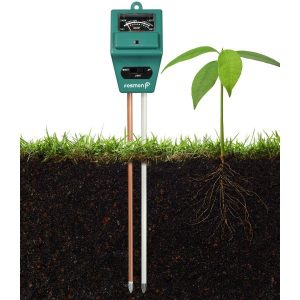Soil sampling is a management tool used to determine the status of soil pH and available nutrients. In this week’s column, the National Agriculture Research and Extension Institute (NAREI) will provide some tips to determine the appropriate amounts of lime and fertilizer inputs needed for the crop(s) grown.
Generally, a farmer needs to know two things about his soil. Firstly, how much fertilizer he or she needs to add to the soil to obtain profitable yields and secondly, how acidic the soil is and whether there is a need to add lime.
Soil testing results provide the soil nutrient status before a crop is planted, thereby permitting more efficient use of fertilizer/manure and lime. Soil tests are done at NAREI for all crops—free of charge for the farming community.
Adding lime and fertilizer to crop production without a current soil test is not an economically and environmentally sound practice. For the next two weeks, NAREI will provide information on what is meant by a chemical soil test, how to take soil samples and why it is important to take a representative sample.
 What is soil testing?
What is soil testing?
The basis for recommending the kinds and quantities of fertilizer for a particular crop is soil testing. It is also the basis for recommending lime requirements.
A chemical soil test is a method for estimating the ability of a soil to supply nutrients to a crop. This is accomplished by treating a soil sample with a mixture of chemicals in a controlled manner for a fixed period of time and then determining the nutrients extracted by using various chemical and instrumental procedures.
Soil tests do not actually measure the amounts of nutrients in the soil. Rather, they estimate the ability of the soil to supply nutrients and provide the profitability of crop response to fertilization.
In order to make sound fertilizer and lime recommendations, the information supplied by farmers as well as that predicted from the climatic records, soil maps and yields response data assist in detecting yield potential.
Information requested of farmers include the location from where the sample was taken, the quantities of manures and fertilizers previously used, the crop previously planted and what crops are now being proposed.
The soil test recommendations must be followed for profitable yields to be obtained. If less than the recommended amount of fertilizer is used, the expected yield will not be the obtained and yields may be so low that a loss and not a profit would be obtained.
Excessive use of fertilizer could result in the death of the crop from fertilizer “burn” or “injury.” Further, although there may be good crop growth, the extra increase in yield resulting from the excess fertilizer used may be worth less than the cost of the excess fertilizer. A similar situation would occur if the correct amounts of lime are not applied.
Next week, NAREI will continue with the information needed to analyse soil samples.



.jpg)








